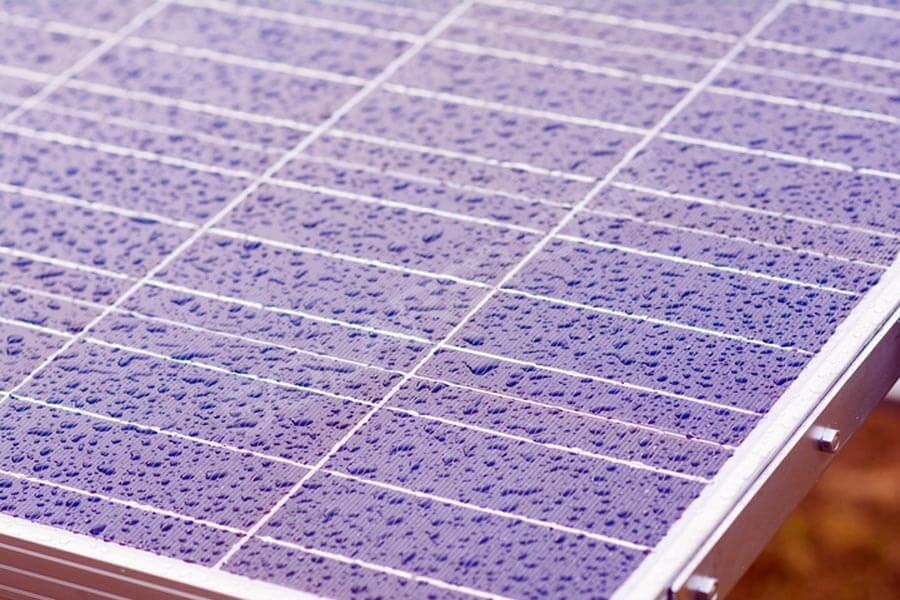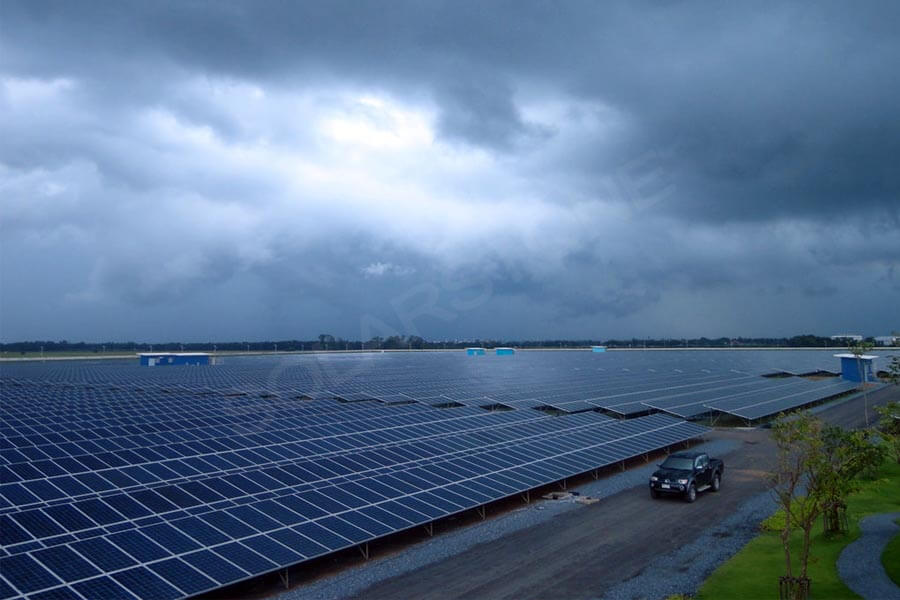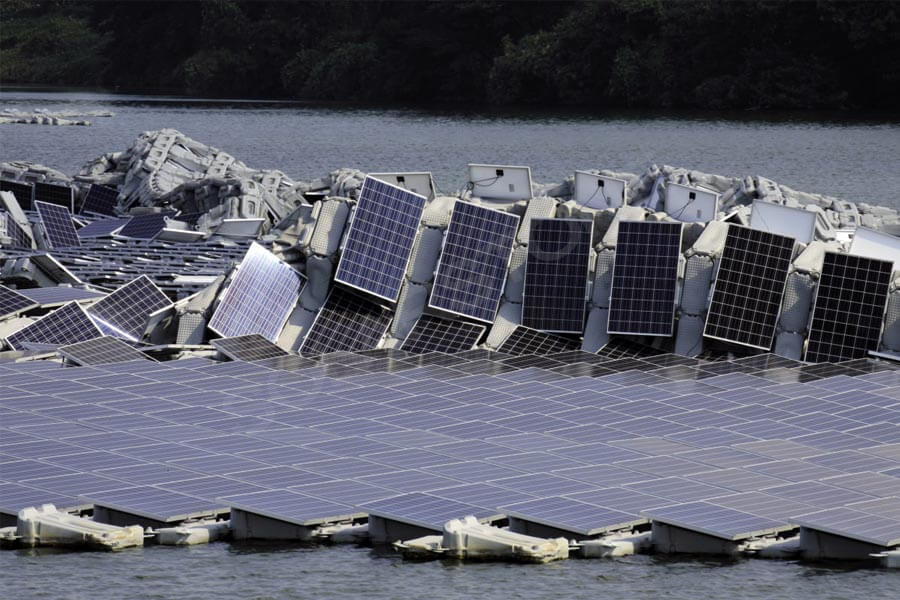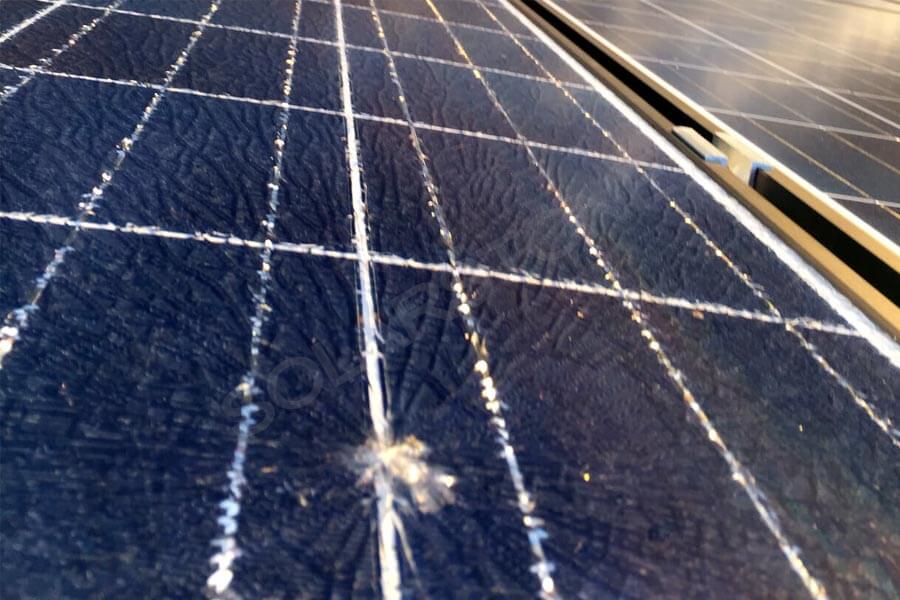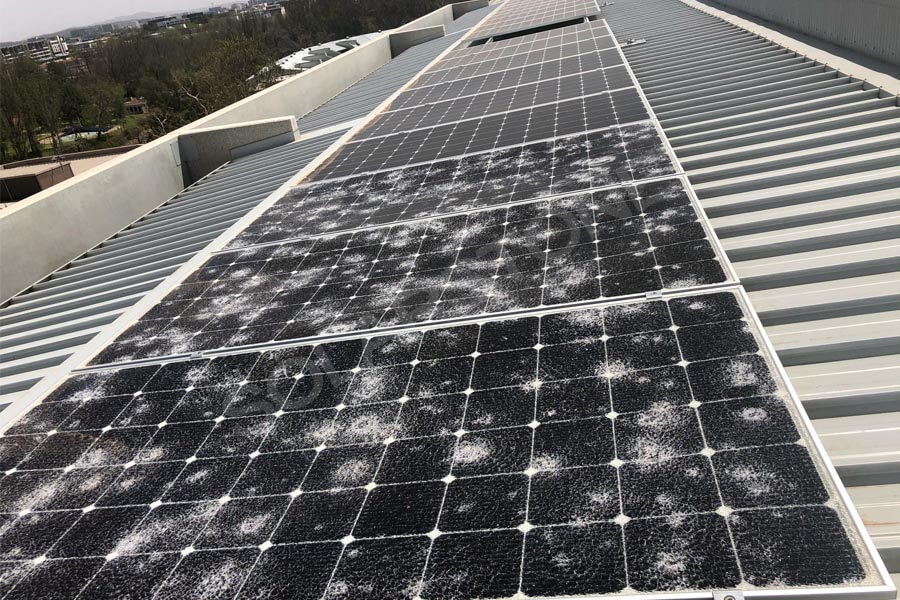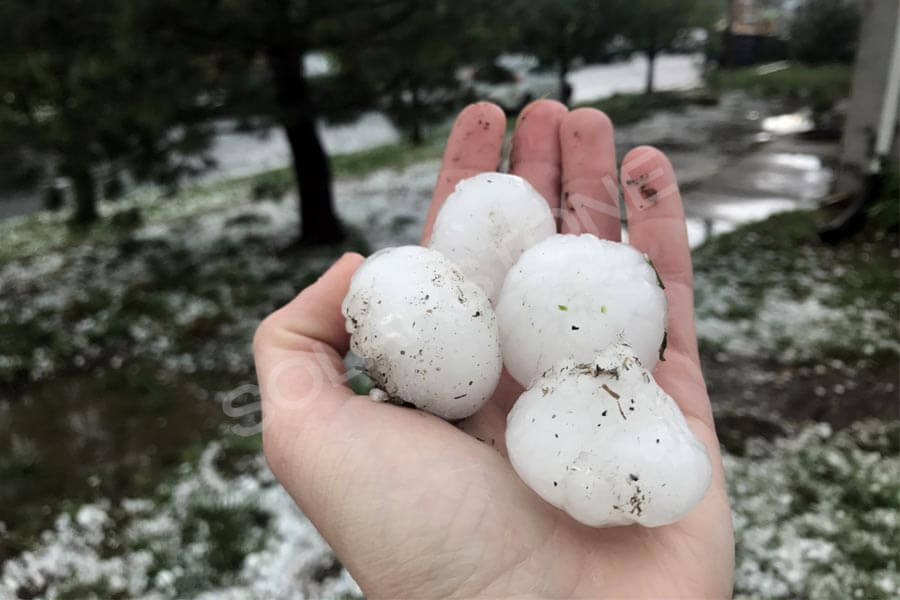It’s raining heavily. What about our photovoltaic power station?
When encountering heavy rain, not only the operation and maintenance personnel complain, but also the owners will worry about problems such as reduced revenue and increased risk. So what factors should photovoltaic power generation projects consider to avoid such losses? For ordinary people, what can be done to ensure the continuous and stable operation of the power station?
Ground power station
Topographic conditions, potential geological hazards, ponding depth, flood level, drainage conditions, etc. shall be considered. Many fishing light complementary projects flooded the power station due to the rise of pond water level, which was caused by incomplete consideration of support height in the original design and poor drainage capacity. Therefore, when selecting the site, we should not only consider the cost, but also focus on the safety of subsequent operations.
Roof photovoltaic power station
Generally, it is built on the roof, and the probability of being flooded is very small. In order to avoid the damage of the power station due to rainy weather, the main consideration is the fixed load on the roof, wind pressure load, snow pressure load and earthquake load.
After the roof meets the load requirements, the installation can not be carried out at will. The installation process of the power station should face south. As the name suggests, the power station faces south, so that it can fully accept the sunlight. Theoretically, the installation angle is equal to or close to the local dimension, and the arrangement mode and spacing need to be determined in combination with the local sunshine and the size of the roof structure.
Equipment Selection
For mainstream inverter manufacturers, they basically have IP65 protection grade and waterproof performance, but the long-term rain weather still has a great impact on the equipment. For the fishing light complementary project mentioned above, how can the support be immersed in water for a long time without corrosion for 10 years, without reducing its rigidity for 20 years, and still have a certain structural stability for 25 years. This has special requirements for the material of the support.
Increase safety investment
While considering the cost and rapid construction of the station, the investment in the safety of the power station should also be increased. The photovoltaic power station must be insured with property all risks insurance to reduce the losses caused by irresistible natural disasters. In addition, business interruption insurance (also known as profit loss insurance) during the operation period of the power station and construction and installation engineering insurance during the construction period of the power station are also essential.
If your roof is a sloping roof, don’t worry at all. If your house is a flat roof, it’s best to consider the drainage problem when designing and installing the photovoltaic power plant. Avoid soaking the solar panel in the rain due to the relatively low installation of the support on the flat roof when the rain is too heavy.
During patrol inspection after rain, do not directly touch the connection between inverter, solar panel and power supply cable with your hands, and wear rubber gloves and rubber boots.
There is a strong wind. What about our photovoltaic power station?
It’s windy every day. Will my support be unstable? Will my solar panel be scratched over? If it turns over, I’ll lose all my money? What should I do?
Can my power station withstand the strong wind?
In the face of natural disasters, can photovoltaic power plants hold on? What should I do?
In order to resist the attack of natural disasters, we need to control the three stages of site selection, design and construction of photovoltaic power plants, and none of the key work can be less.
How to resist strong winds?
Summer is coming, so is the typhoon. There are often two answers to the impact of Typhoon on photovoltaic power plants: “flying” and “unable to fly”.
The wind resistance of photovoltaic power station is mostly determined by photovoltaic support. Theoretically, the maximum wind resistance of the solar support is 216 km / h, and the maximum wind resistance of the solar tracking support is 150 km / h (greater than level 13 wind).
To resist the typhoon, we first need to have a strong photovoltaic support. Therefore, the foundation and support of photovoltaic power station must be strengthened, and the frame strength of solar panel must be ensured at the same time. This requires targeted site selection design, strict control of product quality, and reasonable calculation of wind pressure and snow pressure.
In addition, according to the geology and structure of the project site, the site selection of the power station shall try to avoid areas with frequent natural disasters such as typhoons and tornadoes.
The most important reason why the power station can resist the attack of typhoon is that the power station system is designed according to the local conditions and in strict reference to the wind resistance and seismic parameters of coastal buildings, selects the galvanized support with strong pressure resistance, fully considers the wind resistant air outlet in the design and array of solar panels, and selects the series photovoltaic grid connected inverter.
Theory and practice have proved that the photovoltaic power station is fully capable of withstanding typhoon level 13. As long as the construction is carried out in strict accordance with the standards according to the local climate characteristics, even if there is a strong typhoon, the photovoltaic power station will not “fly to the sky”.
It’s hail. What about our photovoltaic power station?
Many people asked if my solar panel would be damaged if there was hail at my house? I’m so worried!
For qualified photovoltaic power station products purchased from qualified manufacturers, solar panels have been tested by hail impact at the speed of 23m / s. therefore, generally, hail will not affect solar panels.
However, after the hail, daily patrol inspection is also indispensable. If the power generation of photovoltaic power station drops significantly or other abnormalities occur after hail, the owner must timely notify the after-sales personnel of the manufacturer for testing.
Qualified manufacturers must be selected when selecting photovoltaic power stations, because qualified manufacturers can provide qualified products and timely after-sales service!
Regular inspection is essential. After the photovoltaic power station is built, attention should be paid to operation and maintenance, especially in summer. It is best to conduct regular inspection to ensure that the photovoltaic power station has good heat dissipation and air circulation, and timely clean up weeds and obstructions affecting heat dissipation. Only in this way can the power generation and operation of the photovoltaic power station be guaranteed.


